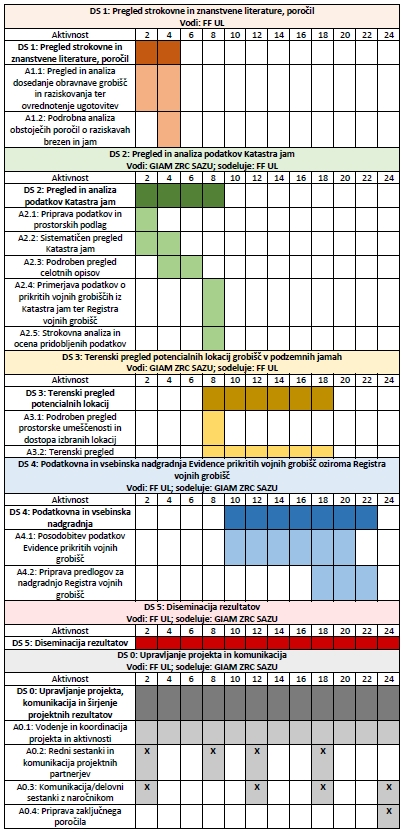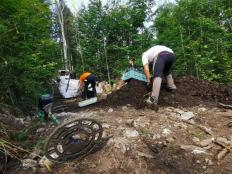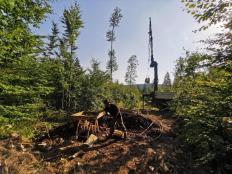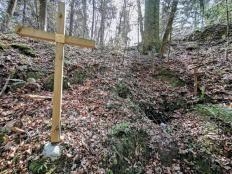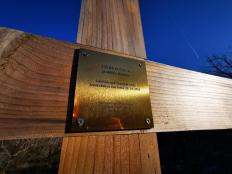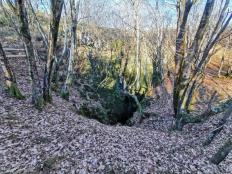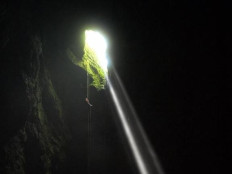Supplement to the Record of Hidden War Cemeteries and the Register of War Cemeteries with data on hidden war cemeteries in underground caves
Principal Investigator at ZRC SAZU
Jure Tičar, PhD-
Original Title
Dopolnitev Evidence prikritih vojnih grobišč in Registra vojnih grobišč s podatki o prikritih vojnih grobiščih v podzemnih jamah
Project Team
Matija Zorn, PhD, Dr. Barbara Lampič, Lea Rebernik-
Project ID
V6-2281
-
Duration
1 October 2022–30 September 2024 -
SICRIS
SICRIS -
Lead Partner
-
Project Leader
-
Financial Source
ARIS - Slovenian Research and Innovation Agency

Ministry of Defence

One of the fundamental values of human society is respect and reverence for the deceased and their right to a dignified burial and memory. This gives rise to a strong public interest, which obliges the State to maintain a certain degree of civility in the treatment of the deceased. The state has a duty to ensure that the deceased are treated in a manner consistent with the level of civilisation prevailing in its territory. Although these rights are enshrined in constitutions, laws, and conventions (e.g., the Geneva Conventions), they are often violated-particularly in times of war and in the period immediately following it. Violations of these rights occurred in Slovenia after the end of World War II, when mass extrajudicial killings took place. The victims were buried in tank trenches, mines, karst caves and shafts.
Systematic identification of these burial sites was not made possible by the state until 2000, but it was not until 2001 that a major change occurred in this area. By 2009, more than 600 locations of hidden burial sites had been identified and inventoried, and this information was included in what is known as the Record of Hidden War Cemeteries. From then until 2020, the database was almost completely inactive. In the meantime, i.e. from 2009 to 2020, about 150 more sites of hidden burials have been discovered.
In 2020-2021, a new spatial data layer on hidden war graves and an application in the ArcGIS online environment were developed, which represents an important step in the establishment of a comprehensive system for monitoring war graves in Slovenia. For this purpose, a systematic review of unregulated material and regulation and data updating of selected hidden gravesites was conducted. In this context, it was found that sites in caves or underground caverns represent one of the least explored areas in the inventory. Therefore, this review is the main motive of this project.
During and shortly after the World War II underground caves in Slovenia also served as places for hidden war graves. The existing Record of Hidden War Cemeteries (2021) contains information on 675 (confirmed or potential) gravesites, including 94 underground caves. An inventory of such burial sites has been compiled in the past based on the Cave Register, but has never been completed.
Based on recent surveys of cave contamination in Slovenia, at least 68 hidden war graves in underground caves were confirmed in a sample of 6,965 caves (55.3% of all caves) from the Cave Register. Based on the percentage of sites in this sample, it is assumed that there are at least 40 more unidentified hidden war graves in underground caves in Slovenia. The research therefore requires a systematic review, collection and compilation of a larger database of data from the Cave Register (2021) on 14,196 underground caves in Slovenia.
In order to provide a comprehensive overview of the existence of hidden war graves in underground caves, to create the basis for recording new sites, and to systematically arrange and supplement the data of the Record of Hidden War Cemeteries and, thus, the Register of War Cemeteries, the archival data of the Cave Register should be systematically arranged and supplemented by the results of field research.
The main objectives of the project are:
- review and analysis of the data of the Cave Register,
- comparison of the data of the Register of War Cemeteries with the results of the analysis of the comparisons of the existing data from the Record of Hidden War Cemeteries and the Register of War Cemeteries and the Cave Register database,
- spatial registration - separate data layer for caves with human remains.
This is followed by a field survey of the sites. Based on the analysis of all caves with human remains, we will focus the field survey on the sites that have a higher potential for the location of a hidden burial ground. The result will be a data and content upgrade to the Record of Hidden War Cemeteries or the Register of War Cemeteries.
